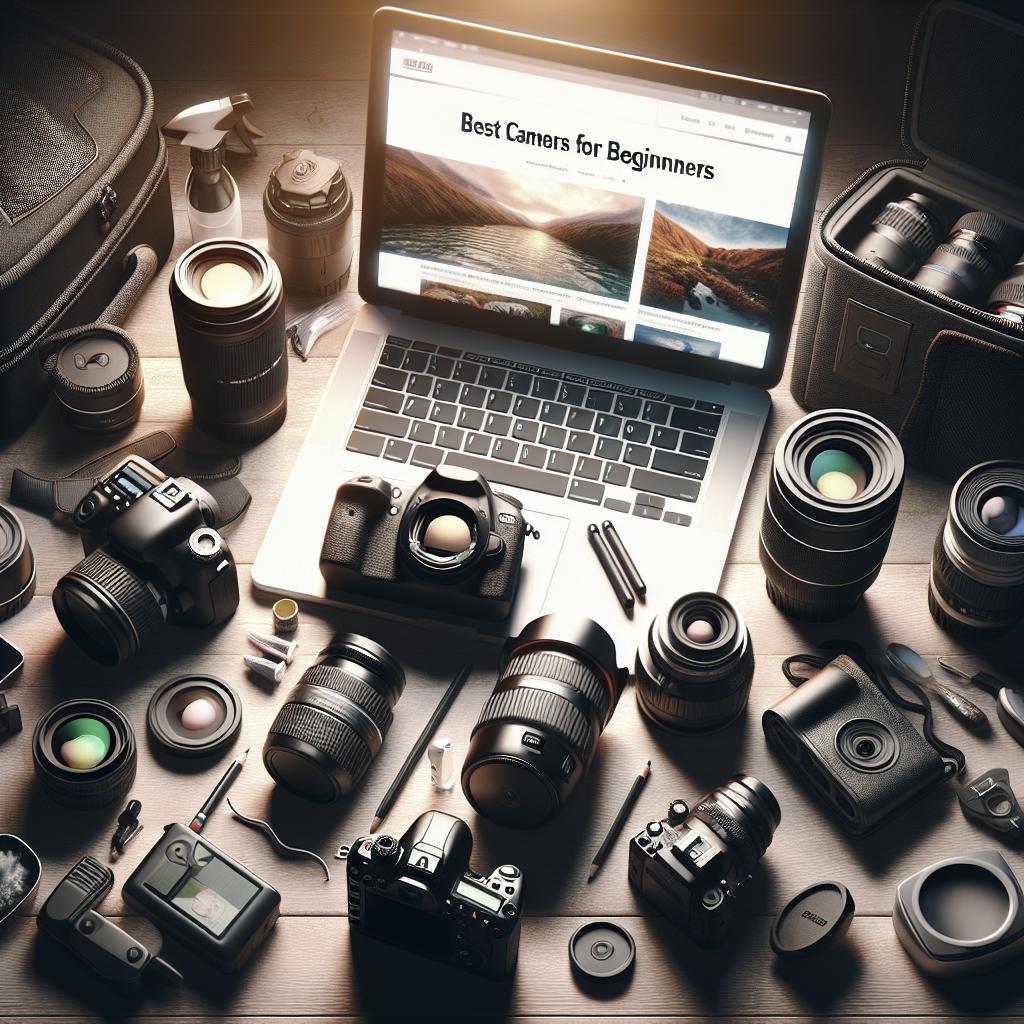Photography enthusiasts, whether seasoned or newly interested, often find themselves marveling at the versatility and capabilities of their cameras. While the basic functionalities such as adjusting the aperture, shutter speed, and ISO are well-known, modern cameras are packed with hidden features that can significantly enhance your photography experience when discovered and utilized. This blog post delves into some of these lesser-known capabilities—shooting modes, exposure compensation, video settings, continuous shooting, and continuous autofocus—uncovering the potential for creating stunning, professional-grade photos. By understanding these hidden features, you can unlock new realms of creativity and efficiency in your photography journey.
Shooting Modes
Scene Modes
Many modern cameras come equipped with various scene modes tailored to specific types of photography. These automatic settings adjust parameters like aperture, shutter speed, and white balance to best suit the scene you are capturing. For example, there are modes for landscapes, portraits, night photography, and sports. Landscape mode typically enhances colors and sharpness for broad vistas, while portrait mode ensures smooth skin tones and a nice background blur to make the subject stand out. Utilizing scene modes can save you time and provide you with optimal settings without having to manually adjust each parameter. Exploring these modes can also serve as a learning tool. By observing what settings your camera chooses for different scenarios, you can better understand the manual adjustments needed for those particular situations. Additionally, scene modes can introduce beginner photographers to diverse shooting conditions, adding a layer of convenience and effectiveness that speeds up the learning curve.
Choose Your Own Focus Point
One of the most empowering features in many digital cameras is the ability to choose your own focus point. Rather than relying on the auto-focus system to decide what part of the frame should be in focus, selecting your own focal point gives you creative control over your composition. This is especially useful in portrait photography, where you might want to focus specifically on the eyes for more impactful images. To use this feature, you typically navigate through the camera’s menu or use a touchscreen to select different focal points, thereby giving you more precision over where the sharpest part of your image will be. Whether you are capturing a macro shot where every millimeter counts or creating a dramatic scene with selective focus, mastering this feature can elevate your photography to a new level of sophistication.
Exposure Compensation
Auto ISO
The Auto ISO function is a valuable yet often overlooked feature in modern digital cameras. Auto ISO allows the camera to automatically select the ISO sensitivity based on the lighting conditions and the settings you’ve chosen for aperture and shutter speed. This capability can be incredibly useful in dynamic shooting environments where the light is constantly changing, such as outdoor events or moving between indoor and outdoor settings. Auto ISO can also help you maintain image quality while keeping your settings optimized for sharpness and exposure. For instance, when shooting in manual mode with a fixed aperture and shutter speed, Auto ISO can ensure that your images are neither too dark nor too bright by adjusting the ISO accordingly. This automatic adjustment provides a balanced exposure without compromising other critical settings.
ISO To Freeze Action
An often-underestimated feature is using ISO to freeze action. High ISO settings can be your best friend in fast-paced environments like sports or wildlife photography where freezing motion is crucial. While high ISO can introduce noise into your images, the trade-off is capturing the decisive moment sharply. Many modern cameras have advanced noise reduction capabilities that allow you to use higher ISO settings without a significant loss in quality. Pairing a high ISO with a fast shutter speed can make it easier to capture fleeting moments that are otherwise challenging to photograph. This feature is particularly beneficial when shooting in low light conditions where a fast shutter speed would normally require a wider aperture, which might not be feasible if you need a certain depth of field.
Fill-In Flash
Fill-in flash is a technique used to brighten shadowed areas, filling in light without overpowering the existing natural light. This is particularly useful in portrait photography, where strong backlighting can cast unwanted shadows on the subject’s face. A gentle pop of fill-in flash balances the light, reducing harsh contrasts and making the photo appear more natural and flattering. To effectively use fill-in flash, adjust your camera’s flash settings or use an external flash with controllable output. Fill-in flash can also enhance your outdoor photos significantly, especially during the golden hour when the sun creates beautiful but unbalanced light conditions. Many cameras have a setting specifically for fill-in flash, allowing you to quickly and easily adjust the flash power for optimal results.
Video
The video capabilities in modern cameras are often underutilized and underestimated. From high-definition recording to various frame rates, the video settings in today’s cameras allow for creating cinema-quality footage. Many cameras now offer 4K resolution, providing stunning detail and clarity that far surpasses traditional HD. Additionally, some cameras provide different frame rates such as 24fps for a cinematic look or 60fps for smooth motion, ideal for action shots. Another hidden gem is the ability to manually control exposure settings while recording video. This includes adjusting shutter speed, aperture, and ISO to match the lighting conditions and your creative intent. These controls offer filmmakers a significant degree of flexibility, making it possible to achieve professional results without needing high-end video equipment.
Continuous Shooting and Continuous Autofocus
Continuous shooting, also known as burst mode, is indispensable for capturing action shots or photographing fast-moving subjects. This mode allows your camera to take several photos in quick succession, increasing the chances of getting that perfect shot. For wildlife photographers, sports enthusiasts, or anyone involved in high-speed photography, continuous shooting is an essential feature. In conjunction with burst mode, continuous autofocus is another incredible tool. This feature ensures that your subject remains in focus, even if it is moving. The camera continually adjusts the focus while you are tracking the subject, providing sharper images and more consistent results. Combining continuous shooting with continuous autofocus creates a powerful duo for capturing dynamic scenes with precision and clarity.
Change Lenses
The ability to change lenses is a feature often taken for granted but is profoundly impactful. Different lenses can dramatically alter the quality and type of photos you can capture. For instance, a wide-angle lens can capture broader scenes, while a telephoto lens is perfect for reaching distant subjects. Macro lenses allow for extreme close-ups, capturing intricate details that are otherwise invisible to the naked eye. Understanding and experimenting with various lenses can expand your creative horizons and improve the versatility of your camera. Investing in good-quality lenses can add a significant depth to your photography toolkit, enabling you to tackle a wide range of subjects and styles. Moreover, learning about lens characteristics such as aperture size, focal length, and image stabilization can further refine your photographic skills.
Final Thoughts
In a world where technology continually evolves, staying updated with your camera’s hidden features can dramatically enhance your photography experience. Understanding and utilizing these capabilities can not only improve your technical skills but also elevate your creative expression. Unlocking your camera’s full potential requires both exploration and practice, making each shoot an opportunity to learn and grow. The table below summarizes the hidden features discussed in this article, along with their benefits and applications: “`html
| Feature | Benefits | Applications |
|---|---|---|
| Scene Modes | Optimized settings for specific scenes | Portraits, landscapes, night shots, sports |
| Choose Your Own Focus Point | Creative control over composition | Portraits, macro shots, dramatic scenes |
| Auto ISO | Balanced exposure in dynamic lighting | Outdoor events, changing light conditions |
| ISO To Freeze Action | Sharp images of fast-moving subjects | Sports, wildlife, low light action shots |
| Fill-In Flash | Brightens shadowed areas | Portraits, outdoor shots with backlighting |
| Video Settings | Cinema-quality footage | High-definition recordings, adjustable frame rates |
| Continuous Shooting | Multiple shots in quick succession | Action shots, fast-moving subjects |
| Continuous Autofocus | Keeps moving subjects in focus | Wildlife photography, sports |
| Change Lenses | Versatility in capturing different scenes | Wide-angle, telephoto, macro, diverse applications |
“` By delving into these hidden features, you can make the most out of your camera, pushing the boundaries of what you can achieve with your photography. Always be curious and adventurous, and let your creativity shine through each captured moment.


